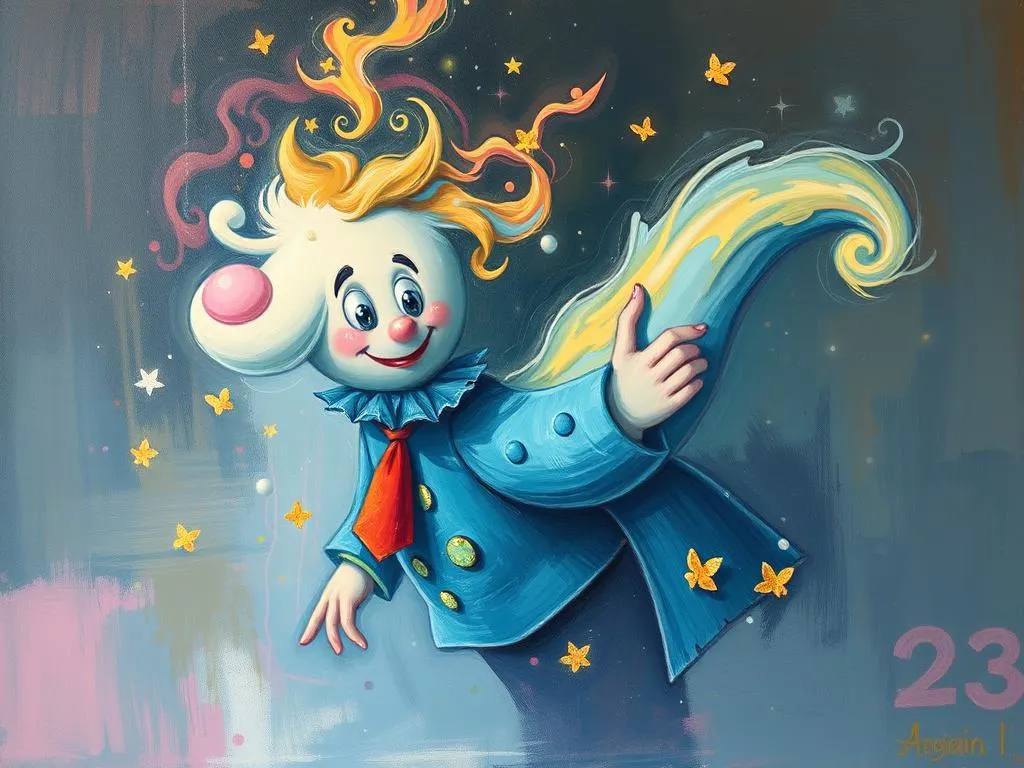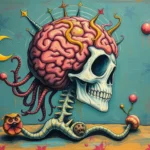
Dreams have long been a source of fascination, often reflecting our innermost thoughts, fears, and desires. The dream symbol of the performer captivates many, as it taps into themes of self-expression, identity, and the roles we play in our daily lives. This dream symbol can evoke a range of emotions, from joy and exhilaration to anxiety and self-doubt. Understanding the symbolism behind the performer can help us unravel the complex narratives of our subconscious mind, making it a compelling topic for exploration.
Symbolism and Meaning
The performer in dreams often represents a public persona or the roles we play in various aspects of life. This figure may embody traits such as charisma, creativity, and confidence, but it can also highlight feelings of vulnerability, insecurity, and the fear of judgment. At its core, dreaming of a performer may signify a desire for recognition or a need to express one’s true self.
The stage, a common setting for these dreams, symbolizes the platform where we showcase our talents, ambitions, and aspirations. It serves as a metaphor for life itself, where we perform our roles in front of an audience—whether that audience consists of friends, family, colleagues, or even strangers. The dynamics of this space can reveal much about how we view our interactions and how we perceive others’ perceptions of us.
Another layer of symbolism can be found in the actions of the performer. Are they dancing gracefully, delivering a powerful monologue, or struggling to remember their lines? Each action holds meaning. For instance, a performer who dances joyfully may represent a sense of freedom and self-acceptance, whereas one who fumbles their performance could symbolize feelings of inadequacy or fear of failure.
Moreover, the type of performance can significantly alter the dream’s interpretation. A singer may reflect a longing for emotional expression, while a comedian might indicate a desire to lighten up or find humor in life’s challenges. Each performance type offers insight into the dreamer’s current emotional state and coping mechanisms.
In addition to individual interpretations, cultural factors can influence how we perceive the symbol of the performer. Different cultures may have varying views on performance, celebrity, and self-expression, thus creating a diverse tapestry of meanings. For instance, in a society that values individuality, a performer might symbolize personal achievement, whereas, in a collectivist culture, they could represent community and shared experiences.
Key Scenarios and Variations
The dream of a performer can manifest in numerous scenarios, each offering unique insights. One common variation is the dreamer finding themselves on stage but unprepared for the performance. This scenario often reflects feelings of anxiety or being underprepared in waking life. It may indicate that the dreamer feels exposed or unworthy in a situation where they are expected to shine.
Conversely, a dream where the performer is celebrated and receives applause can signify feelings of success and validation. In this case, the dreamer may be experiencing a boost in confidence or recognition in their waking life, whether in their career, relationships, or personal endeavors.
Another variation involves the dreamer watching a performer from the audience. This perspective can indicate feelings of admiration or envy, prompting the dreamer to evaluate their own aspirations and desires. It may suggest a longing to step into the spotlight, reflecting a desire for change or a need to assert oneself more boldly in life.
Different contexts can also alter the interpretation of the performer symbol. For example, dreaming of a performer in a chaotic or disorganized environment could symbolize feelings of being overwhelmed or out of control in one’s life. On the other hand, a serene and well-organized performance may reflect a sense of harmony and balance.
The emotions experienced during these dreams are equally significant. If the dreamer feels joy, excitement, or contentment while performing, it may suggest a positive self-image and satisfaction with one’s current life circumstances. In contrast, feelings of fear, embarrassment, or shame can indicate deeper issues related to self-worth, identity, or fear of exposure.
In essence, the scenario in which the performer appears can provide invaluable context for understanding the dream’s underlying messages. Each variation offers a different lens through which to view personal experiences, challenges, and aspirations, encouraging dreamers to reflect on their current life situations and emotional states.
Real-Life Connections and Takeaways
Connecting the symbolism of the performer to real-life situations can be a powerful exercise in self-reflection. Readers are encouraged to consider what aspects of their lives might be mirrored in their dreams. For instance, do you find yourself often seeking validation or grappling with feelings of inadequacy? Recognizing these patterns can lead to increased self-awareness and growth.
One practical approach to self-reflection is to keep a dream journal. Recording dreams immediately upon waking can help capture the emotions, symbols, and scenarios that arise. Over time, patterns may emerge, revealing recurring themes or concerns. This practice can also aid in identifying specific areas in life where change or growth may be needed.
Additionally, consider the roles you play in your waking life. Are there situations where you feel compelled to perform or conform to the expectations of others? Reflecting on these dynamics can lead to a deeper understanding of your own motivations and desires. Perhaps there is a need to embrace your authentic self rather than the persona shaped by external pressures.
Engaging in creative expression can also be a beneficial outlet. Whether through art, writing, music, or dance, finding ways to express your inner thoughts and feelings can provide a sense of liberation and fulfillment. This exploration can help bridge the gap between the performer in your dreams and your true self, fostering a more authentic and confident existence.
Moreover, it’s essential to confront any fears of judgment or failure that may arise from the dream symbol of the performer. This may involve challenging negative self-talk or seeking support from trusted friends or mentors. Building a support network can provide encouragement and validation, helping to combat feelings of insecurity.
Finally, consider how you can bring elements of joy and celebration into your daily life. Whether it’s finding moments to express gratitude, pursuing hobbies that ignite your passion, or surrounding yourself with uplifting people, infusing your life with positivity can shift your perspective and enhance your overall well-being.
In essence, the dream symbol of the performer serves as a powerful reminder of our innate desires for self-expression, connection, and validation. By exploring its symbolism and reflecting on its implications, readers can uncover valuable insights into their lives, fostering a deeper understanding of their own identities and aspirations.
Encouraging readers to reflect personally on their dreams can create a transformative journey. Each dream holds a unique message, inviting us to delve into our subconscious and emerge with newfound clarity and purpose. The performer may take center stage in our dreams, but ultimately, it is our own narrative that we are meant to explore, understand, and embrace.







